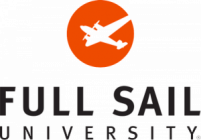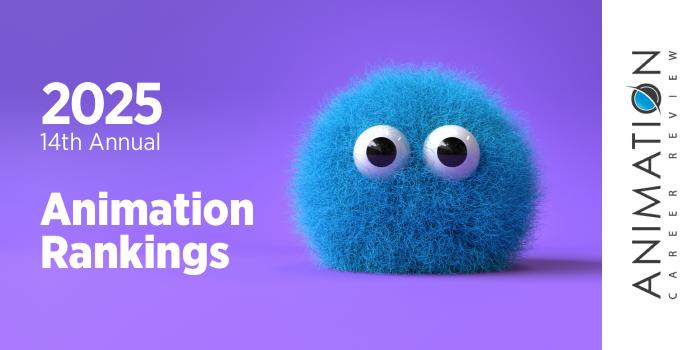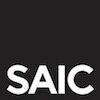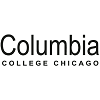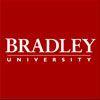The School of Cinematic Arts at DePaul University (DePaul) graduated its first class in 2005. Since then, the school has produced directors of hit television shows such as Grey’s Anatomy and The Blacklist; Emmy Award nominees such as Vera Drew; and animators for Guillermo del Toro's Pinocchio, Epic Games, and Gus Van Sant's Don't Worry, He Won't Get Far on Foot.
Housed in Jarvis College of Computing and Digital Media (CDM), the School of Cinematic Arts also provides many programs for students seeking careers in animation. Options include the Animation BA, BFA, MA, MFA, BA/MA, and BFA/MA, and a Computer Science (CS) + Animation (CS+ANI) BS with an Animation Technical Director (TD) concentration. An Animation TD minor is also available.
The Animation BFA has concentrations in 3D Animation; Game Art; Visual Effects; Storyboarding and Character Design; Motion Graphics; and Cinema. While the Animation BA does not have concentrations, students in this program may create their own focus area through both major and open electives. Examples include Sound Design for Animation; Visual Effects; Stop Motion Animation; 3D Design for Animation; Screenwriting for Majors; Digital Puppet Animation; Illustration Foundations; and Hybrid Animation.
Open electives may be selected from more than 20 Jarvis College minors. Minor examples include Film Production; Designing for Physical Technology; Experimental Filmmaking; Visual Effects; Television Graphic Design; Production; Information Technology; Comedy Filmmaking; and User Experience Design.
The Animation MA program at DePaul University has five concentrations including Traditional Animation; Storyboarding and Character Design; 3D Animation; Technical Artist; and Motion Graphics. Course examples for the program include 3D Animation Production; Animation Figure Study; Advanced Topics in Visual Effects; Topics in 3D Animation; and Game Art Pipeline.
The Animation MFA program at DePaul is designed for animators who have earned an undergraduate degree in visual arts areas such as animation, film, graphic design, or illustration. Because the program follows the project model, students will spend most of their time creating short films and thesis projects under the direction of MFA co-chairs and faculty mentors.
Course examples for the program include Animation Mechanics; Storyboarding I; Sound Design for Animation; Cinema, Animation and Art; Animation History and Practice; Directing Sound Design and Music; Animation Graduate Seminar; and Graduate Teaching Seminar.
The multidisciplinary BS in Computer Science and Animation is designed for students seeking technical artistic roles in animation and game development. In addition to a concentration in Animation TD, the program has a concentration in Game Art TD. Course examples for the program include Introduction to Animation Production; Optimized C++; 3D Character Animation; Environment Modeling; Programming Languages; 3D Modeling and Shading; Advanced Motion Capture Studio; Rendering and Graphics Programming; 3D Animation; Motion Graphics Foundations; 3D Design and Modeling; Advanced 3D Rigging; and Game Art Pipeline.
In addition to access to a variety of in-demand courses, DePaul CS+ANI students benefit from interdisciplinary group projects with students majoring in areas such as 3D animation, storyboarding and character design, game art, game programming, and game design.
Across all School of Cinematic Arts programs, students benefit from courses taught by award-winning filmmakers who are part of one of the nation’s largest full-time animation faculties; access to a state-of-the-art, 32,000 square feet production facility known as DePaul Cinespace Studios; and the new Jarvis Student Center for Innovation and Collaboration. This open, 8,000 square feet space focuses on industry partnerships and multidisciplinary professional learning across emerging technologies. Collaborations and projects between students and faculty emphasize innovation and community needs.
Cinespace and other CDM/SCA studios and facilities provide access to the latest industry-standard animation software, tools, and technologies. This includes Cintiq labs, stop motion stages, fabrication studios, 3D motion capture, motion control, sound studios, professional animation and effects software, and 3D printing.
All DePaul Animation students also have the unique opportunity to participate in the Los Angeles Quarter Program. Over 10 weeks, this immersive experience allows students to intern at major Hollywood studios such as The Jim Henson Company, Disney, Warner Bros. Animation, DreamWorks Animation, Nickelodeon, Sony Studios, and Titmouse.
Additional program benefits include participation in the Premiere Film Festival; the Japan Study Abroad program; Project Bluelight; visiting artists from places such as Disney and Pixar; and access to the Animation Lodge.
The Premiere Film Festival displays and awards the best student work in animation and film. The event attracts jury members from around the country including filmmakers, industry insiders, and festival programmers.
The Japan Study Abroad program is a biennial trip that takes students to Nagoya, Kyoto, and Tokyo for tours of Japanese animation and game studios, cultural sites, and galleries.
Project Bluelight provides hands-on experience in motion picture production to all interested students. Students at The Lodge have opportunities to collaborate on group projects, build their portfolios, and network.
Graduates of the Animation programs at DePaul University are prepared to pursue advanced roles in industries such as film and television, games, and advertising. Program alumni have been hired at major studios and gaming companies such as Lucasfilm, DreamWorks Animation, Electronic Arts (EA), Warner Bros. Animation, Google, Cartoon Network, Disney Animation Studios, Epic Games, Nickelodeon, LAIKA, Blizzard Entertainment, Iron Galaxy Studios, and BioWare.
DePaul University is the largest Catholic university in the United States. Serving 21,210 students, the school is also the nation’s 12th-largest private, not-for-profit university, and the largest private, not-for-profit college in the Midwest. Founded in 1898, DePaul provides more than 300 undergraduate majors and graduate programs across two campuses, and 10 academic colleges and schools. The Higher Learning Commission (HLC) accredits DePaul University.
